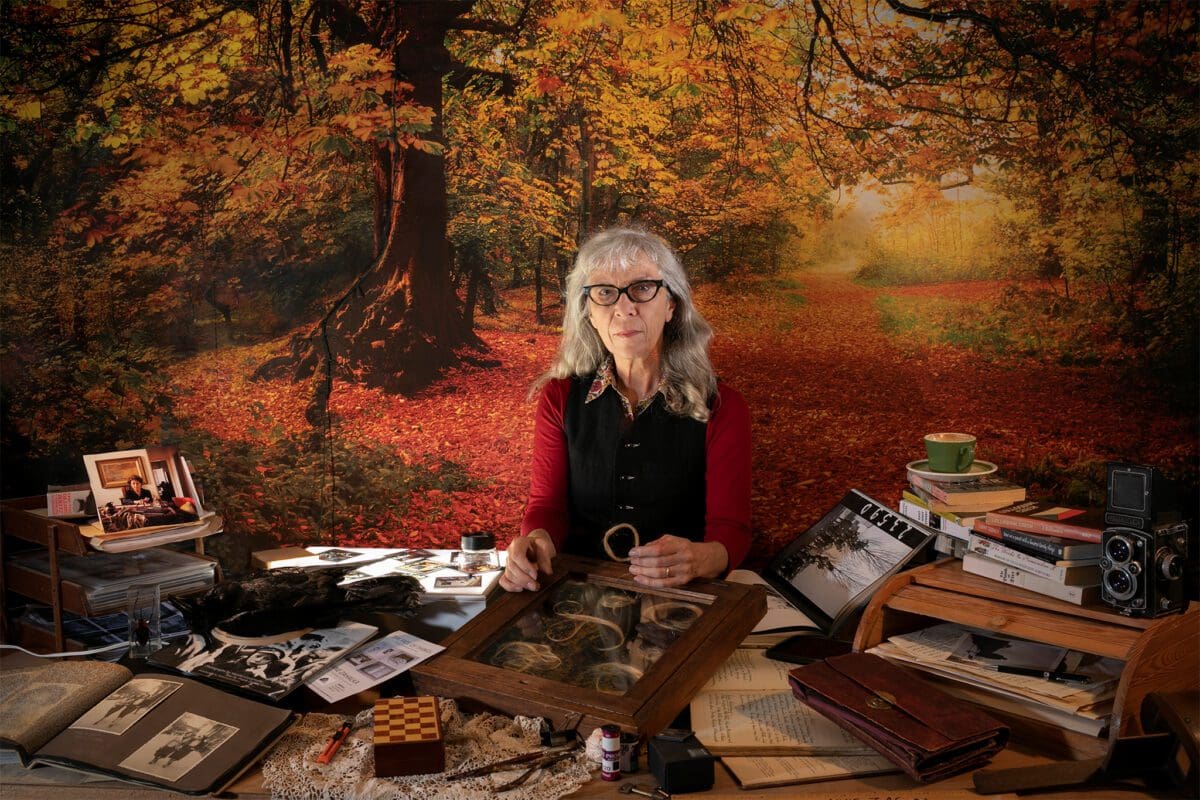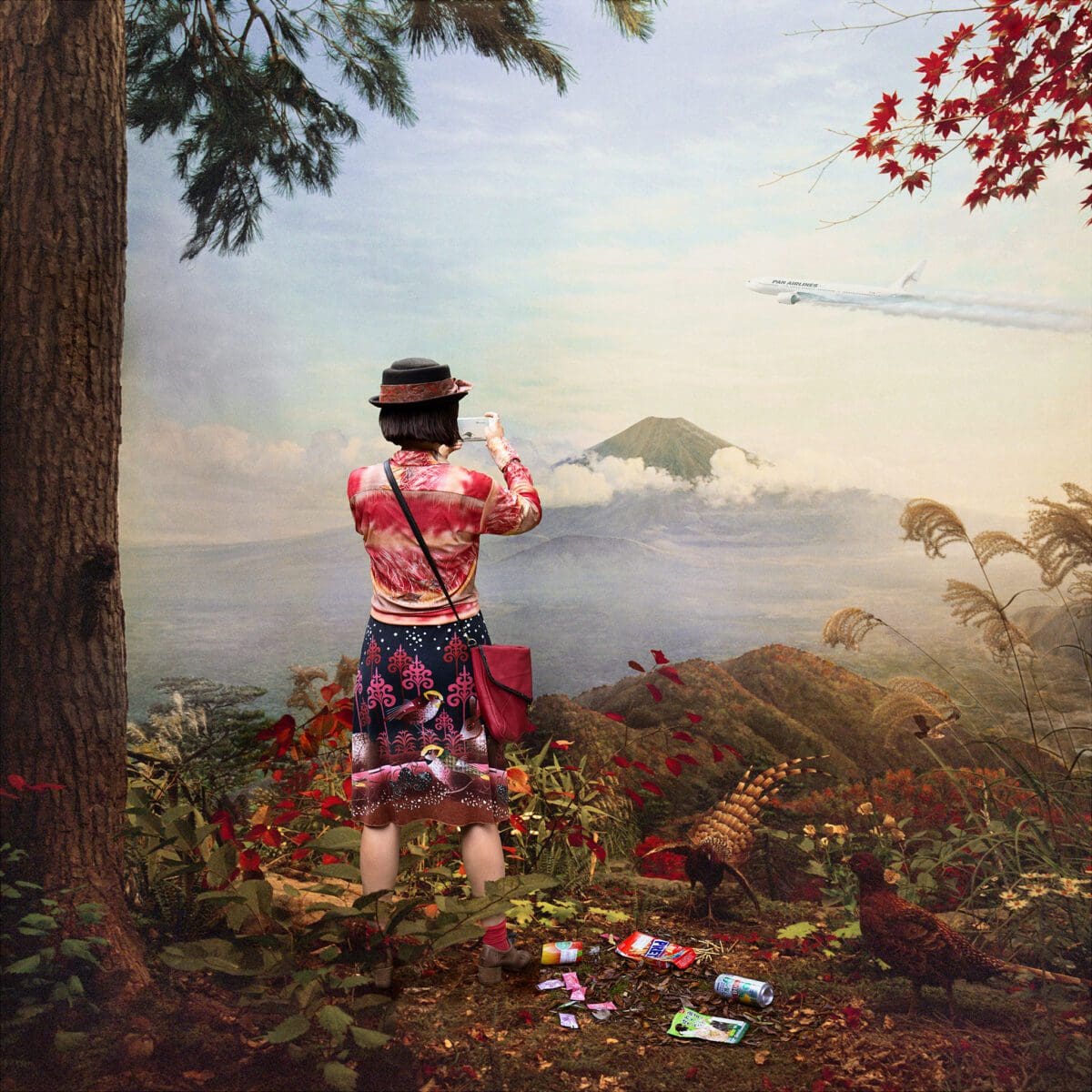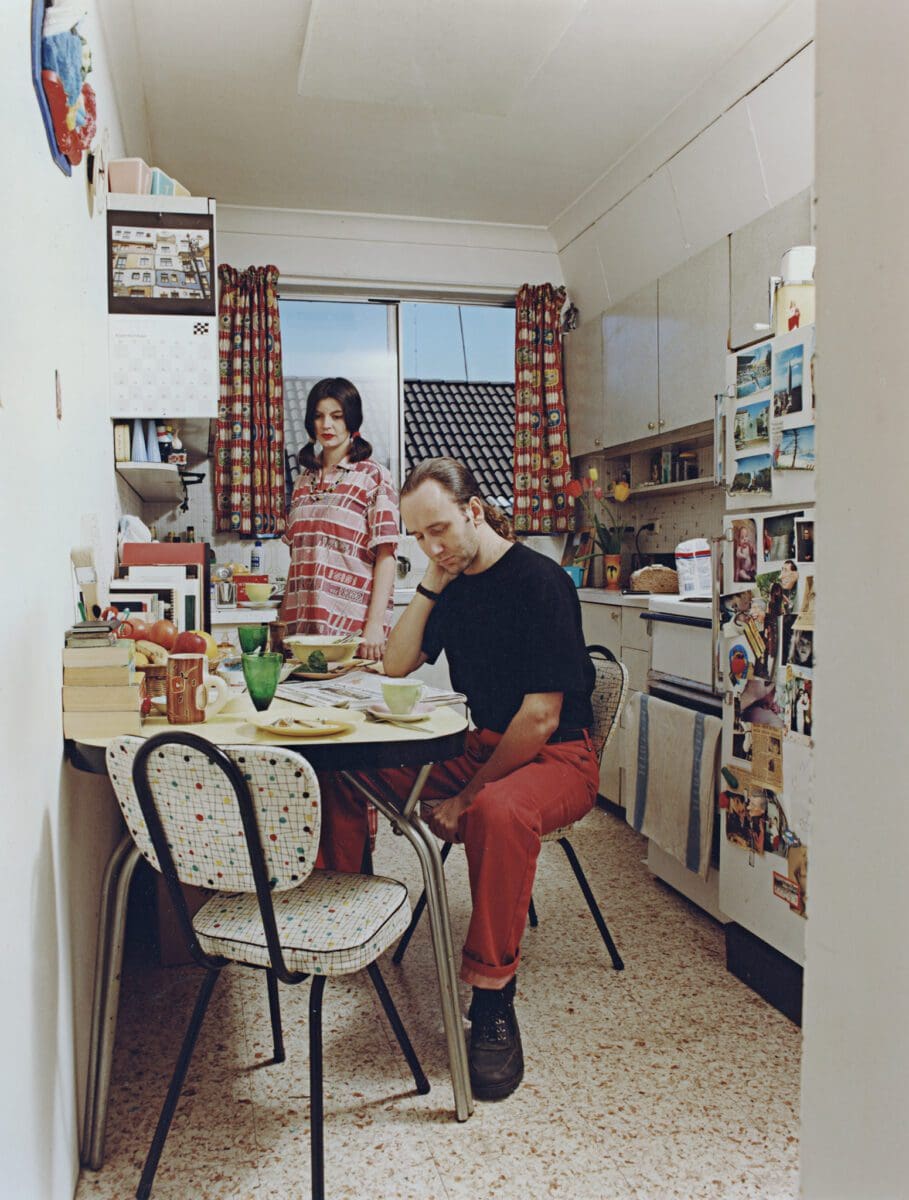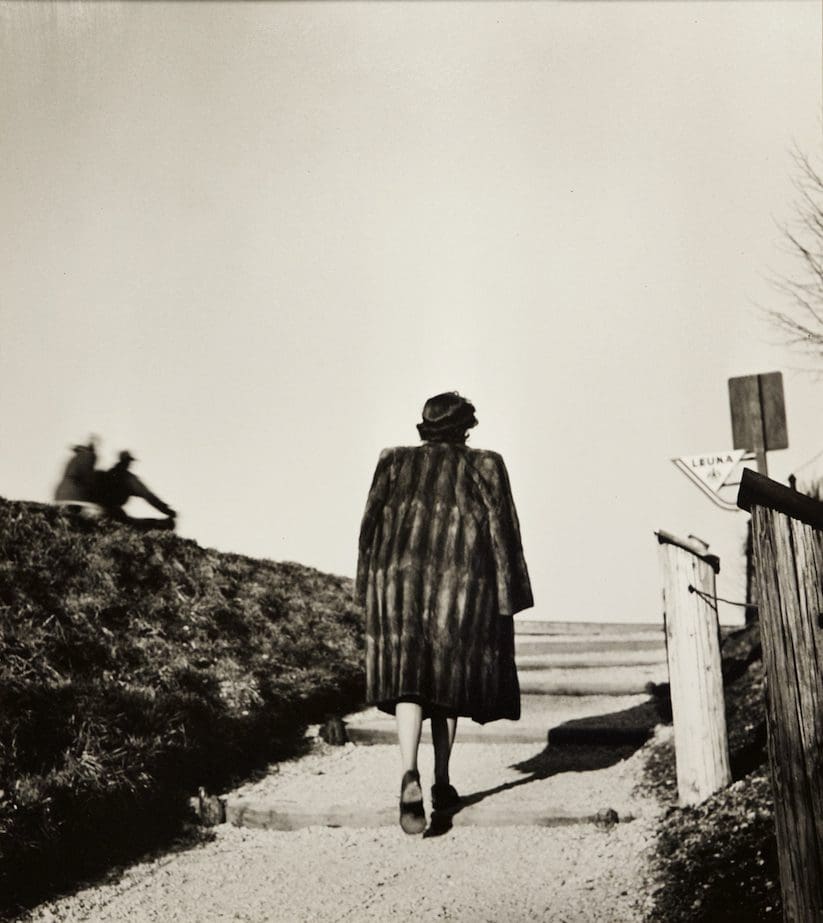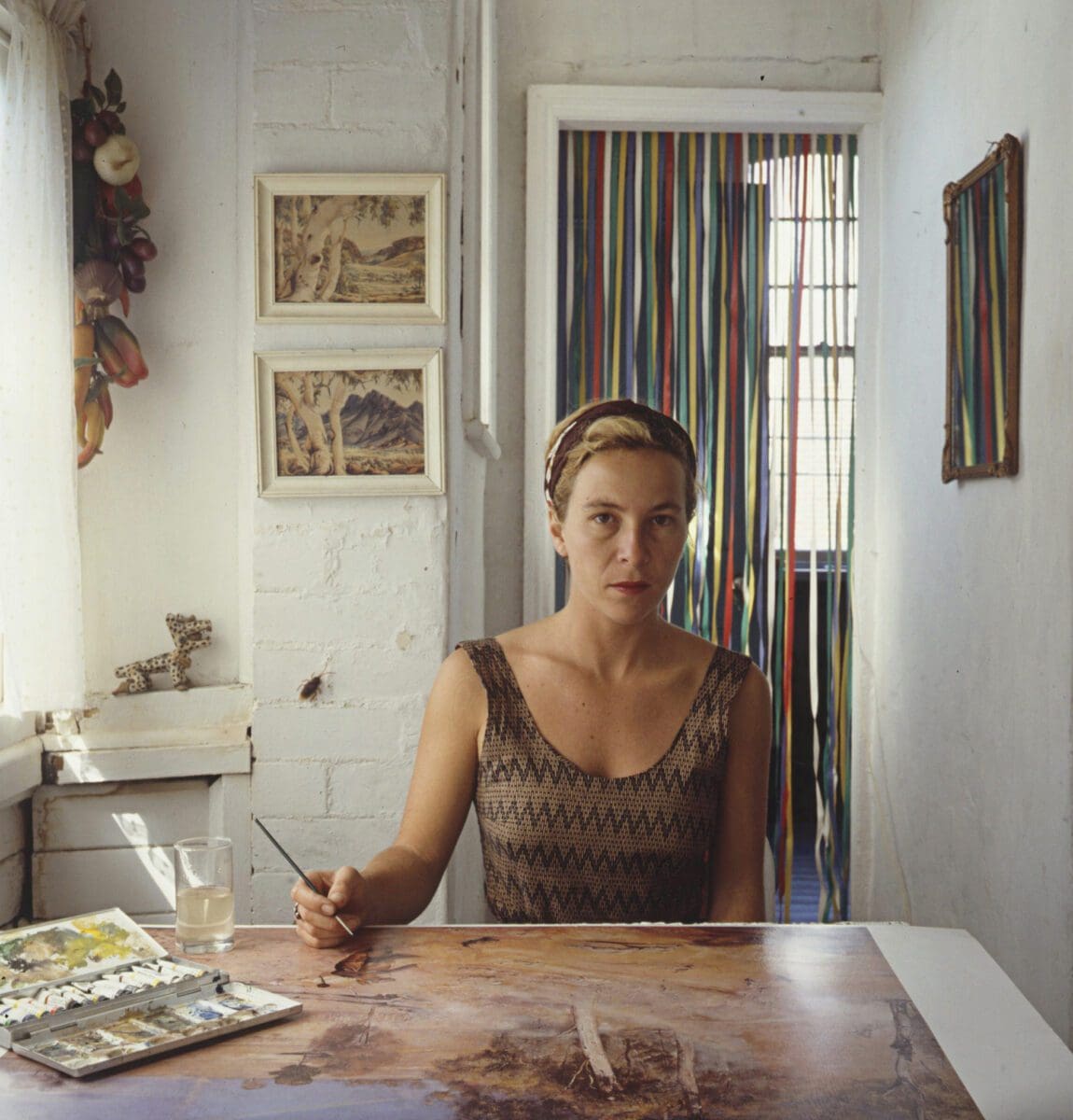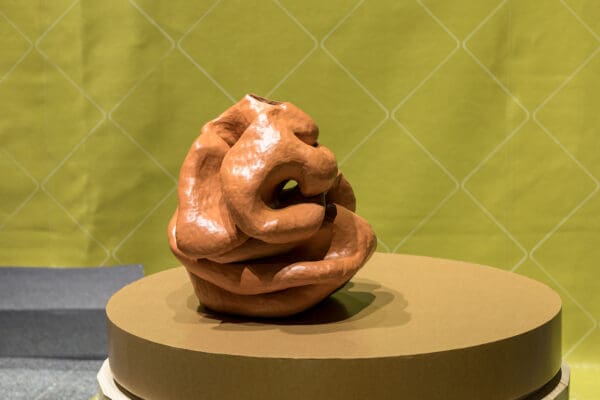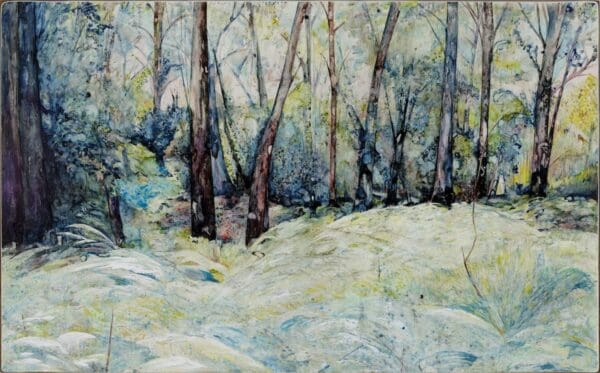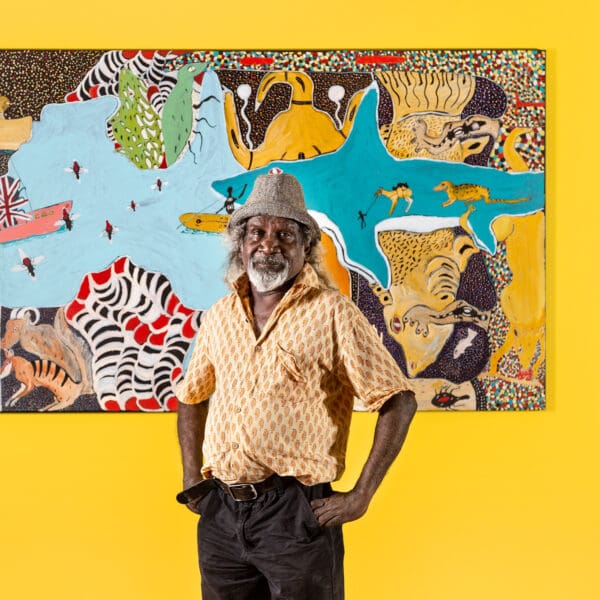Anne Zahalka is a revered Australian photo media artist, with a career spanning four decades. Her work often involves the deconstruction of familiar images through the history and canon of art, recreating these references in a contemporary setting that interrogates cultural assumptions in provocative and humorous ways.
A new retrospective at the Museum of Australian Photography offers the chance to see many of her iconic images in one place. ZAHALKAWORLD is an exploration of the artist, including a recreation of her home studio alongside an immersive archive. In our interview she talks about reflecting on her work, the necessity of humour, and making art in times of political and climate crises.
Sally Gearon: ZAHALKAWORLD is a major retrospective—how did it feel seeing 40 years of your work together in one place?
Anne Zahalka: In some ways it’s been quite confronting. You’re looking at your younger self in conversation with your more mature self, and just hoping that the works still stand up and speak to the ideas that you originally set out to make. But it’s also been incredibly affirming to see the exhibition brought together in a really sensitive way. And I’m really thrilled with the installation and the situating of my studio at the centre of it. I think my mother would be very proud.
“The process has changed a bit, moving from analogue to digital, but the formal structuring of pictures is quite similar.”
SG: You’ve drawn many of the works from your archive, and in placing the works in conversation did this prompt any new reflections on your practice?
AZ: Yes, I realised that my whole approach and practice has changed over time, but a lot of the themes have remained the same. Questions to do with identity, sense of place, belonging, loss, and reflecting on time. I’ve found those themes recurring. And I’m still drawn to reworking early imagery from painting, particularly colonial painting, and their way of seeing the landscape in order to rewrite these narratives. I’ve also returned to those ideas in more recent iterations. Working through the archive and digging out all the old negatives, ephemera, and reproductions that I’ve collected over time was really a way of distilling these through this continuum.
SG: Throughout your work the staging of your images is always so precise—why do you have that preference for precision, and has the way you create photographs changed over time?
AZ: The process has changed a bit, moving from analogue to digital, but the formal structuring of pictures is quite similar. Because I often reference specific genres and works within the canon of painting, my way of organising the figures is subject to how they occupy that space. I want it to read in a particular way, because the references are so known and familiar. So it’s quite important to get the staging right, to direct them. I find a way into the work through the camera, and this framing device allows me to organise the compositions.
I mentioned the change in my practice in terms of moving from analogue to digital; a lot of my earlier pictures were created through montage, so working with familiar images and making interventions into them. And when I’ve done them photographically, working in a real landscape, based on reproductions of paintings, they are then created within the camera, digitally.
The opening image for the exhibition, of me standing on a cliff edge in Bondi, with Aboriginal carvings across a sandstone headland now sitting on a golf course, sadly was staged against a green screen in my backyard. I then superimposed myself into that scene using images that I’d taken 30 years ago when I did my Bondi project. I incorporated some of the documentation of fires from the summer of 2020, and created this landscape that was enveloped by smoke. So, that’s not specifically about staging, but it’s bringing all of those elements together in a coherent and seamless way to speak about the ongoing impact of colonisation and climate change.
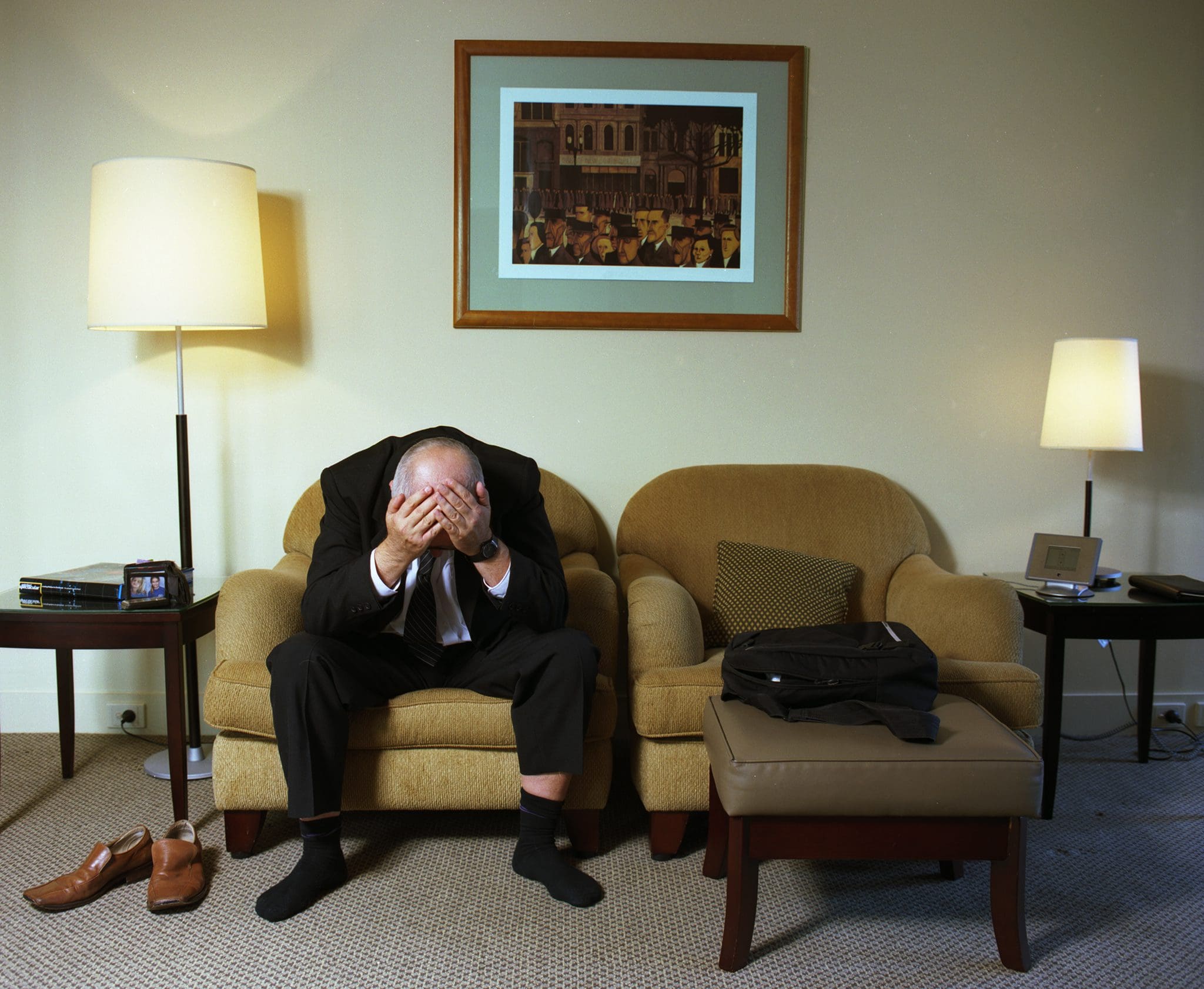
SG: You’ve said before that photography is about lost moments and is inherently nostalgic. What nostalgia was conjured up for you in the making of this show?
AZ: I’ve been travelling back through time, looking at periods of my life and my practice and the people that I’ve worked with, and family and friends who have had a significant place in my work. It was nostalgic, reflecting on these shared moments and places, and friends who I’ve lost, who I’ve depicted in some of the images. So there’s been a sadness to it as well. And also, working with my family material since the passing of my mother has brought up a lot of memories.
But I found that it was both nostalgic and also haunting to revisit periods, such as my residency in Berlin in 1987. Chernobyl erupted the month I arrived, and there was this radioactive cloud drifting over Europe, and in the background perestroika and glasnost were unfolding, and within two years the Berlin wall had fallen. And on my return to Australia, the bicentennial was brewing and there was a resurgence of nationalism, and it was quite a difficult time to deal with that. I found myself creating protest images, anti-bicentennial t-shirts and so on.
But it was also nice, being taken back to these periods in my life. The work and the friendships I made were really special.
SG: You often challenge cultural assumptions in playful ways. Do you value humour as a form of criticism?
AZ: Yeah, I’ve always used humour in my work, sometimes in subtle ways and sometimes more overtly. It’s a way of reflecting on ourselves and what we stand for and believe in. It’s a little bit like holding a mirror up and asking us to consider what is reflected, and poking fun at the figures that have been so celebrated and revered and idealised in the imagery that I’m referencing. I think humour allows people an entry into the work, and it’s always been there in some ways.

SG: When so much of your work looks at cultural diversity and climate change—and these are two issues that feel ever more important in society, but also seem increasingly difficult to solve—how does that leave you feeling about the relation between art making and wider politics?
AZ: I think art has an important role to play. What is happening in our world at the moment is so distressing, and it’s challenging to try and make work that can deal with that and really affect people. But I think there are a lot of great initiatives and artists working with scientists and across disciplines to raise awareness. And I suppose my work attempts to do that as well as, to join with others and support them. For example, I was invited to create a work for the ‘Yes’ vote for an Indigenous Voice to parliament for the upcoming referendum. It had to include the word ‘Yes’ within an image. I found myself working with landscapes that I’ve documented over time and placing the word in huge block letters that reach to one point in the horizon to remind us of whose land we are on. It’s great to have the opportunity to make something that participates in this dialogue.
SG: The exhibition is cast as a recreation of your studio—what does an average day in the studio look like for you? Are you routine driven, or more spontaneous?
AZ: A lot of my time is spent at a computer working and planning the next project or preparing material for proposals. It’s also cataloguing, documenting, and updating my website—which all sounds pretty boring. But, I found since my studio has been emptied for the exhibition, and having sifted through a lot of the material through the process of making the exhibition, I’ve come across unfinished works and had a few ideas, and now have a little bit of space and time to start to rework and create new things. It is quite exciting and also liberating. There’s so much material that I have here, I felt really burdened by it. So, it’s been really amazing to have it out on display at the Museum of Australian Photography. I hope it never comes back.
ZAHALKAWORLD – an artist’s archive
Anne Zahalka
Museum of Australian Photography
(Wheeler’s Hill, VIC)
On now—10 September


